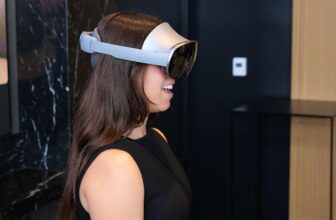Screens are greater than screens to plug into your PC — they form how you’re employed, play and create. Whether or not you want the perfect monitor for gaming, video enhancing or on a regular basis duties, there are many choices that steadiness worth, efficiency and design.
In 2025, you’ll discover all the things from compact shows for mild work to huge widescreen panels that make multitasking a breeze. A brand new monitor may additionally imply sharper pictures with excessive decision panels, or higher consolation with IPS shows that provide correct colours and large viewing angles.
After all, not each job requires 4K or increased. Typically a decrease decision choice makes extra sense, particularly if you wish to lower your expenses or don’t have a strong GPU. With so many varieties of screens available on the market, the correct alternative comes right down to your setup and the sort of work (or play) you intend to do.
Fast Overview
Desk of Contents
Finest screens for 2025
Display dimension: 27 inches | Decision: 1080p | Show kind: IPS | Max refresh fee: 75Hz | Weight: 6.6 kilos | Connector kind: HDMI | Brightness (cd/m2): 250cd/m2
The perfect finances monitor with a steadiness of dimension, refresh fee and colour accuracy is Samsung’s 27-inch 1080p T35F. It’s good for enterprise or mild PC gaming and content material work, because of the IPS panel and 75Hz refresh fee. Plus, it’s pretty enticing and fashionable trying. There are some belongings you don’t get at that worth, in fact – it could solely tilt and has simply an HDMI 1.4 connection.
Display dimension: 24-inches | Decision: 1080p | Show kind: IPS | Max refresh fee: 165Hz | Weight: 12.2 kilos | Connector kind: HDMI | Brightness (cd/m2): 350cd/m2
When you’re good with a 24-inch 1080p show, BenQ’s EX240 presents a improbable mixture of picture high quality, brightness and pace. The important thing promoting level is the 165Hz refresh fee and 1ms response time, each glorious for a monitor on this worth vary. On the identical time it places out a really respectable 350 nits of brightness and presents punchy colours and good viewing angles. It additionally appears to be like prefer it prices much more, making it an excellent worth total.
Display dimension: 28-inches | Decision: 4K | Show kind: IPS | Max refresh fee: 60Hz | Weight: 14 kilos | Connector kind: HDMI, DisplayPort | Brightness (cd/m2): 400cd/m2
The 28-inch HP V28 4K HDR monitor is a good throughout alternative, particularly for leisure or content material creation. The 60Hz IPS panel and manufacturing facility calibration delivers glorious colour accuracy and it’s a pleasant dimension for artistic or enterprise work. It comes with DisplayPort, HDMI and three USB 3.0 ports, together with a USB-C port with 65W of charging for a laptop computer or pill. And it’s straightforward to set excellent, because of its top, swivel and pivot changes.
Display dimension: 27-inches | Decision: 4K | Show kind: IPS | Max refresh fee: 60Hz | Weight: 19 kilos | Connector kind: HDMI, DisplayPort | Brightness (cd/m2): 350cd/m2
The ASUS ProArt PA279C is a good content material creation monitor for the worth because of the 4K decision and memorable colour accuracy straight from the manufacturing facility. On the identical time, it presents first rate brightness at 350 nits, a large 180 diploma viewing angle and glorious ergonomics. It even has an HDR setting, although the monitor isn’t actually brilliant sufficient for true HDR enhancing, and colour accuracy falls off a bit at that setting.
Display dimension: 27-inches | Decision: 4K | Show kind: IPS | Max refresh fee: 60Hz | Weight: 21.5 kilos | Connector kind: HDMI, DisplayPort | Brightness (cd/m2): 400cd/m2
The Dell UltraSharp U2723QE is an ideal monitor for content material creators because of the IPS Black panel that permits a real 2000:1 distinction ratio. It additionally presents 98 p.c protection of the DCI-P3 HDR colour house with 1.07 billion colours (through 8-bit + FRC) — glorious numbers for a monitor below $500. It additionally has a wide selection of ports, together with USB-C, HDMI and DisplayPort, together with a Gigabit Ethernet port, 5 USB-A ports, two USB-C ports (one with 90W charging) and a KVM change to be used with a number of computer systems without delay.
Display dimension: 32 inches | Decision: 4K | Show kind: IPS | Max refresh fee: 60Hz | Weight: 18.1 kilos | Connector kind: HDMI, DisplayPort | Brightness (cd/m2): 350cd/m2
If you would like bang for the buck by way of dimension, look no farther than the 32-inch LG 32UN650-W. It comes with a 31.5-inch 60Hz IPS 10-bit panel (8-bit + FRC to be actual) that covers a wonderful 95 p.c of the DCI-P3 gamut and shows as much as 1.07 billion colours. On the identical time, it helps HDR, albeit with simply 350 nits most brightness, together with AMD FreeSync to enhance smoothness when gaming. It’s nice ergonomically as properly because of the lean and top changes, and it even comes with built-in audio system.
Display dimension: 27 inches | Decision: 1440p | Show kind: QD-OLED | Max refresh fee: 280Hz | Weight: 14.97 kilos | Connector kind: HDMI, DisplayPort | Brightness (cd/m2): 1000cd/m2 peak
Alienware’s 27-inch 280Hz QD-OLED Monitor (AW2725D) is within the higher finish of this class, however the worth level could also be a brand new low for a QD-OLED monitor. It combines QHD decision with a high-speed 280Hz refresh fee and true 10-bit show with 99.3 p.c DCI-P3 protection, permitting sharp high-quality visuals together with a easy gaming expertise. Oh, and there may be one different catch — you’ll want to attend till this summer time to purchase one.
Display dimension: 27 inches | Decision: 4K | Show kind: IPS | Max refresh fee: 60Hz | Weight: 18.4 kilos | Connector kind: HDMI, DisplayPort | Brightness (cd/m2): 350cd/m2
ViewSonic’s ColorPro VP2786 27-inch 4K HDR monitor presents an ideal steadiness of decision, colour accuracy or brightness for content material creators. The true 10-bit IPS panel covers 98 p.c of the DCI-P3 colour palette with a wonderful Delta <2 accuracy determine, and is licensed for soft-proofing by the demanding Fogra print trade. On the identical time, it presents HDR10 help, albeit with a restricted 350 nits of output. It even features a “ColorPro” wheel management appropriate with Adobe or Seize One apps.
Display dimension: 32 inches | Decision: 4K | Show kind: OLED | Max refresh fee: 240Hz | Weight: 19.4 kilos | Connector kind: HDMI, DisplayPort | Brightness (cd/m2): 1,000cd/m2
The OLED advantages of the ASUS Rog Swift OLED PG32UCDM are crystal clear because it presents practically all the things creators or players would need: 1,000 nits of brightness in HDR mode, true 10-bit with 99 p.c DCI-P3 protection for optimum colour accuracy and a 240Hz refresh fee with an unimaginable 0.03 ms response time. Distinction can be top-notch because of the QD-OLED show’s means to flip particular person pixels utterly off. It’s additionally on level by way of connections with a 90W USB-C charging level, plus each HDMI 2.1 and DisplayPort 1.4 accessible. Observe that it lists for over $1,000 however it could typically be discovered on sale at or under that worth.
Display dimension: 31.5 inches | Decision: 4K | Show kind: LCD | Max refresh fee: 60Hz | Weight: 22.5 kilos | Connector kind: HDMI, DisplayPort | Brightness (cd/m2): 350cd/m2
Dell’s P3223QE 4K USB-C Hub monitor is productivity-oriented, because of its wired Ethernet connectivity and USB-C ports that provide as much as 90W of energy supply for laptops. It’s a 4K IPS panel with a 178-degree viewing angle and 350 nits of brightness and help for a billion colours (8-bit + FRC). It presents top, pivot, swivel and tilt adjustment, a VESA mounting interface and DisplayPort/HDMI inputs.
Display dimension: 27 inches | Decision: 2,560 x 1,440 | Show kind: VA | Max refresh fee: 180Hz | Weight: 11.9 kilos | Connector kind: HDMI, DisplayPort | Brightness (cd/m2): 1000cd/m2 in HDR mode
For extra on this topic it’s finest to take a look at Engadget’s gaming monitor guide, however right here, we spotlight two high picks from that story.
The Q27G3XMN presents an almost unbeatable mixture of options, efficiency and affordability. It’s a mini-LED monitor with HDR efficiency that’s not so good as the OLEDs on this checklist (although far brighter total), however higher than something you’ll discover on an edge-lit LCD. With a 180Hz refresh fee, it’s additionally speedy sufficient for all however probably the most fast-paced aggressive esports video games. Better of all, it’s priced affordably at below $300. For these causes, until you may have an even bigger finances or extra particular wants, the Q27G3XMN goes to be the perfect wager for most individuals.
Display dimension: 26.7 inches | Decision: 2,560 x 1,440 | Show kind: QD-OLED | Max refresh fee: 360Hz | Weight: 9.4 kilos | Connector kind: HDMI, DisplayPort | Brightness (cd/m2): 400cd/m2
Display dimension: 26.7-inch | Decision: 2,560 x 1,440 | Refresh fee: 360Hz | Panel kind: QD-OLED | Response time: 0.03ms (GtG) | Side ratio: 16:9 | Brightness: 250 cd/m² | Weight: 9.4 kilos with out stand
If you would like a gaming monitor that principally does all of it, the Alienware AW2725DF has so much going for it. This QD-OLED includes a 360Hz refresh fee and 0.03ms response. It additionally carries a Vesa DisplayHDR True Black 400 certification, so anticipate near-flawless HDR efficiency. It even has a HDMI 2.1 port if you wish to use it with an Xbox Collection X or PlayStation 5. From a efficiency standpoint, the one draw back is that it gained’t produce true blacks in rooms with an excessive amount of ambient mild. Nonetheless, that is true of each QD-OLED monitor available on the market proper now.
At near $1,000, it’s additionally costly. However for what it’s value, the OLED market is extremely aggressive for the time being. I’ve seen the AW2725DF go on sale a couple of occasions over the previous couple of months, dropping to as little as $700.
Display dimension: 27 inches | Decision: 5K | Show kind: Retina (Mini LED) | Max refresh fee: 60Hz | Weight: 13.8 kilos | Connector kind: USB-C, Thunderbolt 3 | Brightness (cd/m2): 600cd/m2
Normally, monitor compatibility points with MacBooks and Macs are a factor of the previous, although you possibly can nonetheless expertise points with issues like refresh charges, significantly on M1 Macs. When you’d want to remain throughout the Apple household, probably the most cost-effective choice continues to be the 27-inch Apple Studio Display. It helps 5K decision (5,120 x 2,880) with as much as 600 nits of brightness, so it could deal with artistic chores with ease. It even features a 12-megapixel UltraWide digicam that retains you in body through Middle Stage, together with a three-mic array, so that you gained’t should spend further on a webcam
Display dimension: 14 inches | Decision: 1440p | Show kind: IPS | Max refresh fee: 60Hz | Weight: 1.5 kilos | Connector kind: USB-C | Brightness (cd/m2): 300cd/m2
This class additionally has its personal guide, however we’re together with the perfect journey monitor as this class applies to a number of patrons.
When you’re at all times on the go, Lenovo’s M14t Gen2 cell monitor makes it straightforward to carry a pleasant second show wherever you need. Its 14-inch panel includes a 2,240 x 1,400 decision with a one hundred pc sRGB colour gamut and a 16:10 facet ratio for somewhat further vertical display screen house. It additionally helps USB-C energy pass-through (as much as 65 watts) so it could conveniently share juice with a related gadget like a telephone or laptop computer. You even get sketching help because of Lenovo’s included stylus. Better of all, the stand tilts from zero to 90 levels so it could match even in tight areas and it’s moveable sufficient to cross the globe at simply 1.5 kilos.
Display dimension: 32 inches | Decision: 4K | Show kind: Mini LED | Max refresh fee: 120Hz | Weight: 32.3 kilos | Connector kind: HDMI, DisplayPort, USB-C | Brightness (cd/m2): 1,600cd/m2
ASUS has lowered the worth for its high-end ProArt PA32UCXR reference monitor to only $3,000 , making it a real discount for a no-compromise show. It delivers as much as 1,600 nits of peak brightness and is DisplayHDR 1400 licensed because of the mini LED show tech with 2,304 native dimming zones. The true 10-bit panel additionally presents 98 p.c DCI-P3 and Rec.2020 protection and helps Dolby Imaginative and prescient, HDR10 and HLG HDR modes, and colour accuracy is calibrated to Delta E < 1, lower than practically any monitor available on the market.
If that’s not sufficient, it helps as much as a 120Hz refresh fee and has a 5-millisecond response time, whereas supporting AMD FreeSync — making it good for gaming creation artists.
On high of this mannequin, ASUS now makes a number of barely much less brilliant and far cheaper variants, together with the $1,300 PA32UCRK, providing 1,000 nits of brightness and a 60Hz (not 120Hz) refresh fee. Specs are practically an identical in any other case.
Components to contemplate earlier than shopping for a monitor
Panel kind
The most affordable screens are nonetheless TN (twisted nematic), that are strictly for players or workplace use. VA (vertical alignment) screens are additionally comparatively low cost, whereas providing good brightness and a excessive distinction ratio. Nonetheless, content material creators will discover that LCD, IPS shows (in-plane switching) ship higher colour accuracy, pixel density, image high quality and large viewing angles — making them a powerful choice for common pc monitor use.
If most brightness is necessary, a quantum dot LCD show is the way in which to go — these are sometimes present in bigger shows. OLED panels are actually accessible and supply the perfect blacks and colour replica, however they lack the brightness of LED or quantum dot shows. Plus, they’re costly. The newest kind of OLED monitor, known as QD-OLED from Samsung, is now widespread amongst gaming screens. Probably the most notable benefit is that it could get so much brighter, with latest fashions hitting as much as 1,000 nits+ of peak brightness.
MiniLEDs are actually broadly utilized in high-end shows. They’re just like quantum dot tech, however because the title suggests, it makes use of smaller LED diodes which are simply 0.2mm in diameter. As such, producers can pack in as much as 3 times extra LEDs with extra native dimming zones, delivering deeper blacks and higher distinction. MiniLED shows additionally have a tendency to supply glorious backlight management, making them an ideal alternative for HDR content material and video enhancing.
Display dimension, decision and show format
The place 24-inch shows was kind of customary (and might nonetheless be helpful for fundamental computing), 27-, 32-, 34- and even 42-inch shows have develop into in style for leisure, content material creation and even gaming lately.
Practically each monitor was 16:9, however it’s now potential to search out 16:10 and different extra unique show shapes. On the gaming and leisure aspect, we’re additionally seeing curved screens and widescreen ultrawide screens with facet ratios like 21:9. When you do determine to purchase an ultrawide show, nevertheless, remember the fact that a 30-inch 21:9 mannequin is similar top as a 24-inch monitor, so that you may find yourself with a smaller show than you anticipated.
A 4K monitor is almost a should for content material creators, and a few people are even going for 5K or all the way in which as much as 8K. Consider, although, that you just’ll want a reasonably highly effective pc with an honest graphics card to drive all these sharp pixels. And 4K increased decision must be paired with a display screen dimension of 27 inches and up, otherwise you gained’t discover a lot distinction between 1440p. On the identical time, I wouldn’t get a mannequin bigger than 27 inches until it’s 4K, as you’ll begin to see pixelation should you’re working up near the show. That’s when a decrease decision monitor reveals its limits.
One new monitor class to contemplate is portable monitors designed to be carried and used with laptops. These sometimes are available in 1080p resolutions and sizes from 13-15 inches. They normally have a light-weight kickstand-type help that folds as much as maintain issues compact and maximize portability and performance.
HDR
HDR provides vibrancy to leisure and gaming – however watch out earlier than leaping in. Some screens that declare HDR on their advertising and marketing supplies don’t even conform to a base customary. To ensure that a show not less than meets minimal HDR specs, you’ll wish to select one with a DisplayHDR score with every tier representing most brightness in nits.
Nonetheless, the bottom DisplayHDR 400 and 500 tiers might disappoint you with a scarcity of brightness, washed out blacks and mediocre colour replica. When you can afford it, the perfect monitor to decide on is a mannequin with DisplayHDR 600, 1000 or True Black 400, True Black 500 and True Black 600.
The place televisions sometimes supply HDR10 and Dolby Imaginative and prescient or HDR10+, most PC screens solely help the HDR10 customary, aside from a couple of (very costly) fashions. That doesn’t matter a lot for content material creation or gaming, however HDR streaming on Netflix, Amazon Prime Video and different companies gained’t look fairly as punchy. As well as, the perfect gaming screens are normally those supporting HDR600 (and up), relatively than content material creation screens – with a couple of exceptions.
Refresh fee
Excessive refresh fee is a key function, significantly on gaming screens. A naked minimal these days is 60Hz, and 80Hz and better refresh charges are a lot simpler on the eyes. Nonetheless, most 4K shows high out at 60Hz with some uncommon exceptions and the HDMI 2.0 spec solely helps 4K at 60Hz, so that you’d want not less than DisplayPort 1.4 (4K at 120Hz) or HDMI 2.1. The latter is now accessible on numerous screens, significantly gaming shows. Nonetheless, it’s solely supported by the most recent NVIDIA RTX 3000- and 4000-series, AMD RX 6000-series GPUs. Help for G-Sync and AMD FreeSync can be one thing to search for if you wish to eradicate display screen tearing and stuttering throughout fast-paced gameplay — particularly when paired with a excessive refresh fee.
Inputs
There are primarily three varieties of fashionable show inputs: Thunderbolt, DisplayPort and HDMI. Most screens constructed for PCs include the latter two, whereas a choose few (sometimes constructed for Macs) will use Thunderbolt. So as to add to the confusion, USB-C ports could also be Thunderbolt 3, and by extension, DisplayPort appropriate, so you might want a USB-C to Thunderbolt or DisplayPort cable adapter relying in your show.
Colour bit depth
Critical content material creators ought to take into account a extra expensive 10-bit monitor that may show billions of colours. If finances is a matter, you possibly can go for an 8-bit panel that may faux billions of colours through dithering (typically spec’d as “8-bit + FRC”). For leisure or enterprise functions, a daily 8-bit monitor that may show thousands and thousands of colours will probably be wonderful.
Colour gamut
The opposite facet of colour is the gamut. That expresses the vary of colours that may be reproduced and never simply the variety of colours. Most good screens lately can cowl the sRGB and Rec.709 gamuts (designed for photographs and video respectively). For extra demanding work, although, you’ll need one that may reproduce extra demanding fashionable gamuts like AdobeRGB, DCI-P3 and Rec.2020 gamuts, which embody a wider vary of colours. The latter two are sometimes used for movie projection and HDR, respectively.
Monitor FAQs
Is OLED higher than mini-LED for screens?
OLED is healthier than mini-LED in lots of areas however not all. Listed below are some great benefits of OLED panels:
-
OLED screens have no “blooming” or halos round brilliant elements of the picture.
-
OLEDs have blacks with zero brightness, which isn’t achievable on mini-LED. Which means in addition they have increased distinction ratios.
-
OLEDs eat much less vitality.
-
OLEDs have sooner response occasions for gaming.
And listed here are some great benefits of mini-LED screens:
-
They’re brighter (typically a lot brighter), so it may be higher for HDR content material.
-
They do not endure from burn-in like OLED can.
What dimension monitor is finest for a house workplace?
This is determined by the person. For regular use, 27-32 inches is the candy spot. When you’re one who likes many home windows open at a time (like a inventory dealer), you then may wish to go as much as 37 and even 42 inches.
Are curved screens value it for gaming?
When you want as a lot pace as potential, a curved monitor allows you to quickly look across the display screen with out altering focus or shifting your head as a lot in comparison with a flat display screen. It additionally supplies extra immersion. The disadvantage is that curved shows are usually wider in order that they take up extra desk house. They’re additionally typically costlier.
Trending Merchandise

SAMSUNG FT45 Sequence 24-Inch FHD 1...

ASUS RT-AX1800S Dual Band WiFi 6 Ex...












